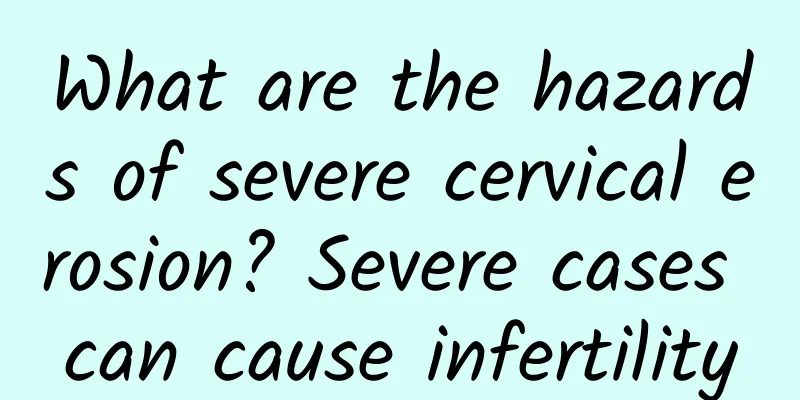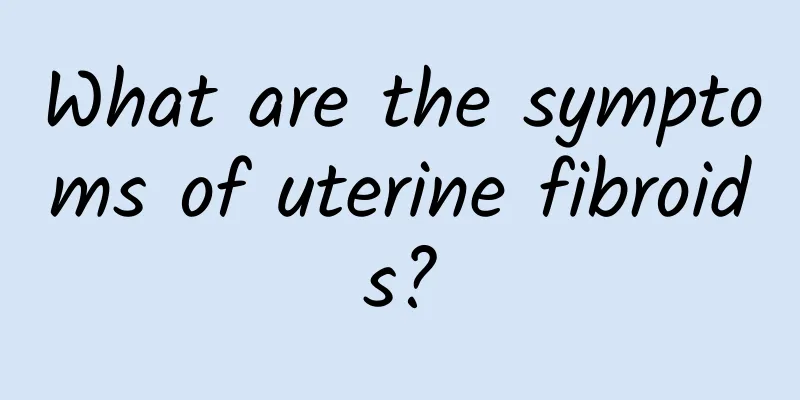Lower abdominal distension, beware of uterine fibroids

|
Uterine fibroids are a relatively common tumor. The most common manifestations of uterine fibroids include uterine bleeding, vaginal discharge, abdominal mass, compression, etc. Let's ask experts to analyze the manifestations of uterine fibroids in detail. The most common symptom of uterine fibroids is vaginal bleeding, which occurs in half of the patients or more. Subserosal uterine fibroids usually do not cause vaginal bleeding. When the intramural fibroids are large, they may affect uterine contraction or increase the area of the endometrium, causing excessive menstruation or prolonged menstruation. If it is a submucosal fibroid, there will be irregular vaginal bleeding. When the uterine cavity enlarges, the endometrial glands increase, and there is pelvic congestion or inflammation, the leucorrhea will increase. When the submucosal fibroids ulcerate, become infected, bleed, or necrotize, bloody leucorrhea or purulent leucorrhea will occur, and the amount can be large. Abdominal masses are often discovered after they grow out of the pelvic cavity, and are often obvious in the early morning when the bladder is full on an empty stomach. The pain caused by uterine fibroids manifests as a feeling of heaviness in the lower abdomen or soreness in the waist and back, which is usually not very serious. If some uterine fibroids are red and degenerated, the abdominal pain will be more severe and accompanied by fever. Severe abdominal pain occurs when the pedicle of the subserosal uterine fibroid is twisted. Different compression manifestations may occur due to different growth locations and sizes. If the fibroids grow on the anterior wall of the uterus, they may compress the bladder and cause frequent and urgent urination. If the fibroids grow on the posterior wall of the uterus, they may compress the rectum and cause constipation. Fibroids occurring in the broad ligament may compress the ureters, internal and external veins, and nerves, resulting in ureteral obstruction, hydronephrosis, lower limb edema, or neuralgic pain, which are manifestations of uterine fibroids. The above is the introduction of "symptoms of uterine fibroids", for reference only. If you have similar symptoms of uterine fibroids, you should pay attention to it and do not let uterine fibroids threaten your life. If you have other questions about the symptoms of uterine fibroids, please consult our online experts for more information. For more information, please visit the uterine fibroids topic at http://www..com.cn/fuke/zgjl/ or consult an expert for free. The expert will then give a detailed answer based on the patient's specific situation. |
<<: Four aspects of postoperative conditioning for uterine fibroids
>>: Detailed analysis of the five major symptoms of uterine fibroids
Recommend
Do you know what causes ectopic pregnancy?
Nowadays, there are more and more patients with e...
How to treat chronic cervicitis in women? Four kinds of medicine can cure chronic cervicitis
Cervicitis is a common gynecological inflammation...
Dietary considerations for adenomyosis
Adenomyosis is one of the common gynecological di...
Introducing the three major treatment methods for ectopic pregnancy
Ectopic pregnancy has had a great impact on our l...
How much does it cost to cure functional uterine bleeding?
Dysfunctional uterine bleeding is a common diseas...
Nutritionists’ favorite sweet soup can beautify your skin and prevent intestinal obstruction!
Let me introduce to you a sweet soup that I often...
How to check chocolate cyst
Experts say: Chocolate cysts have a tendency to b...
Increase satiety! Eat 3 "Ingredients That Make You Bulk"
The most difficult part in losing weight is proba...
What causes ovarian cysts and can they be cured?
Ovarian cysts may be caused by endocrine disorder...
Ectopic pregnancy may be caused by appendicitis perforation
Ectopic pregnancy may be caused by appendicitis p...
What are the harms of menopause to women?
Menopause is an inevitable experience for every w...
What is the difference between miscarriage and ectopic pregnancy? There are 3 major differences
The fundamental difference between miscarriage an...
How to treat cervicitis
Cervicitis is one of the common gynecological dis...
How to cure irregular menstruation?
Some people are under a lot of pressure at work, ...
How to scientifically treat cervical warts
Everyone knows that cervical warts are a relative...









